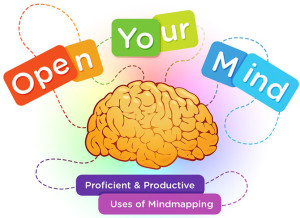MindMapping to Find Solutions by Meggin McIntosh, PhD
 Mindmapping is not new. Tony Buzan claims to have coined the term in the 70’s and it is not the purpose of these tips to debate that claim, but I have certainly read all of his books and those of others who have written on the topic ever since I was a teacher at the Talented and Gifted Magnet High School in Dallas. The concept resonates with me and I believe it will resonate for you.
Mindmapping is not new. Tony Buzan claims to have coined the term in the 70’s and it is not the purpose of these tips to debate that claim, but I have certainly read all of his books and those of others who have written on the topic ever since I was a teacher at the Talented and Gifted Magnet High School in Dallas. The concept resonates with me and I believe it will resonate for you.- Put a central word, phrase, or question in a box or oval in the center of a large piece of paper (or a small piece, if that’s all you have available). You might need to do a mindmap on marketing your services, reaching more clients, designing a new program, or any other area of your coaching business.
- Draw a line out from the central node and write a word, phrase, idea, question, or tip in an oval (or other shape). It’s nothing fancy and it doesn’t have to be pretty.
- Then, either go back to the central node or extend off the new thought with another idea. You do not have to go in any certain order (as compared to an outline, for example).
- If you feel stumped, look at what you have already generated and see what else is then prompted when you review your ideas. That’s one of the beauties of mindmapping; it assists you in generating additional connections.
- Feel free to use pen or pencil, colored pencils or markers, or any other writing implement that is handy or that you really like.
- Do not censor yourself and your ideas. This is a mindmap and it is reasonably free- form. That is OK! If you are so “anal” that it has to look perfect (not that I’d know anything about that!) feel free to redo it later. For now, just keep going.
- Avoid redoing your mindmap (or recopying!) except in particular circumstances, e.g., if you are actually redoing your mindmap because your first one has gotten so messy that you can’t even see what you have. In an instance like this, redoing your mindmap gives you the opportunity to actually create a new mindmap from the old one. It really isn’t a copying exercise.
- Recognize that the purpose of a mindmap as part of your thinking process is to allow you to generate ideas, make connections, and reframe conceptualizations.
- Once your mindmap has served its purpose (generating new ideas for a marketing plan, structuring a writing project, etc.), then get back to creating your plan, writing your article, or whatever other work can progress with new insight because of your mindmap.
- Know that no mindmap is ever finished. Your marketing plan, your new program, your plan for bringing in new clients, however, can be finished and implemented, so get to it.
As I mentioned, in an upcoming week, I’ll give you some reasons why mindmapping makes more sense than outlining. For now, I hope you’ll trust me and give this a try. If you want to see examples of what mindmaps look like, just Google “mindmap” and you’ll find numerous, varied examples. This will help you see that there is not ONE WAY to mindmap.
And to help you generate those ideas for your next project you will want to access the FREE class Proficient & Productive Use of Mindmapping Open Your Mind! which offers ideas and strategies for how to integrate mindmapping into your thinking and problem-solving.



